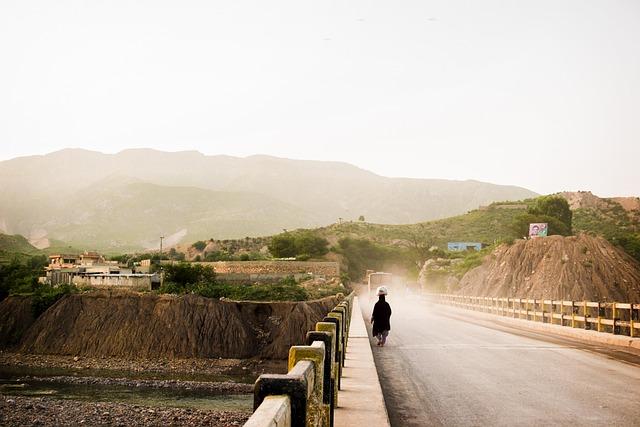Exploring Pakistan’s Struggles: Addressing Our Social Divides
In the heart of South Asia lies Pakistan, a nation rich in culture, history, and resilience. Yet, beneath the surface of its vibrant landscapes and diverse communities, a myriad of social divides persists, shaping the lives of its citizens in profound ways. From economic disparities and educational inequities to ethnic tensions and gender inequalities, the challenges Pakistan faces are complex and multifaceted. This article seeks to embark on a journey through these struggles, shedding light on the deep-rooted issues that fragment society, while also exploring the initiatives and movements designed to bridge these gaps. As we delve into the narratives of those affected, we aim to foster understanding and dialogue around the critical importance of unity in a country that stands at a crossroads. Join us as we explore how acknowledging and addressing these social divides can pave the way toward a more cohesive and inclusive Pakistan, where every voice is valued, and every individual has the opportunity to thrive.
Understanding Historical Contexts of Social Divides in Pakistan
The multifaceted nature of social divides in Pakistan has deep historical roots, shaped by a complex interplay of political, ethnic, and religious influences. Throughout the decades, the legacy of colonial rule has left an indelible mark on how various groups perceive themselves and each other. The partition of 1947, which divided the subcontinent into India and Pakistan, not only created a new nation but also instigated mass migrations, violence, and trauma that still resonate across generations. On top of this, the socio-political landscape has frequently been marred by power struggles among factions, leading to systemic inequalities that perpetuate divisions along lines of class, ethnicity, and religion.
- Ethnic Tensions: Rivalry among ethnic groups such as Punjabis, Sindhis, Pashtuns, and Baloch often leads to competition for resources and political representation.
- Religious Divides: The Sunni-Shia divide, alongside various sects and schools of thought, has historically fueled societal friction.
- Class Disparities: A stark divide exists between the affluent and the impoverished, exacerbated by urban-rural divides and lack of access to education and healthcare.
Furthermore, socio-economic policies have not been uniformly applied, resulting in a landscape where privilege is concentrated in the hands of a few, while others remain marginalized. This disparity is often mapped through various socio-economic indicators that illustrate the challenges faced by different communities. For instance, access to education, healthcare, and employment opportunities vary significantly by region and ethnicity, creating a fabric of inequality that has been difficult to untangle. Understanding this historical context is crucial as Pakistan strives to build a more united society; it sheds light on the roots of current divides and highlights the importance of policy interventions aimed at bridging them.
| Social Divide | Impact on Society |
|---|---|
| Ethnic Identity | Creates barriers in communication and understanding. |
| Religious Beliefs | Leads to sectarian violence and discrimination. |
| Economic Class | Forms a cycle of poverty and restricts access to resources. |

The Role of Education in Bridging Gaps Across Communities
Education serves as a powerful equalizer, offering individuals from various backgrounds the opportunity to rise above their circumstances. In a country like Pakistan, where social, economic, and ethnic divisions often dictate access to resources and opportunities, an inclusive education system can foster mutual understanding and respect among different communities. By emphasizing critical thinking, collaborative learning, and cultural exchange, educational institutions can become melting pots where students learn not only their subjects but also the art of empathy and social cohesion. Through projects and activities that encourage participation from all walks of life, schools and universities can challenge stereotypes, encourage dialogue, and ultimately contribute to a more united society.
The integration of community-oriented programs into educational curricula can further bridge these divides. Initiatives that focus on community service, local history, and cultural appreciation promote a sense of belonging and shared responsibility. By fostering interdisciplinary learning that incorporates the diversity of Pakistan’s rich tapestry – from rural communities to urban centers – education can help erase misconceptions and build pathways to collaboration. For instance, schools that engage students in community-driven research or environmental projects enable them to tackle real-world issues together, instilling both knowledge and a sense of collective identity.

Empowering Local Governance to Foster Unity and Collaboration
In the heart of Pakistan, local governance presents a promising avenue for bridging the growing social divides. Empowering community leaders enables them to better understand the unique challenges faced by their constituents. By prioritizing inclusive decision-making and participatory governance, local officials can foster a sense of ownership and pride among residents. When individuals from diverse backgrounds collaborate on community projects, they cultivate mutual respect and drive shared goals, ultimately transforming the social fabric.
Strengthening local governance also requires the enhancement of resource allocation and capacity-building initiatives. Ensuring that local institutions are well-equipped to engage with underrepresented groups is crucial in this process. Not only does this bridge gaps between communities, but it also encourages transparency and accountability. Integrating technology in local governance can play a vital role in promoting collaboration. For example, the use of mobile applications and online platforms can facilitate communication and gather community feedback, making government more accessible to all. Below is a table highlighting key initiatives that can bolster unity:
| Initiative | Description |
|---|---|
| Community Dialogues | Facilitating discussions that include diverse voices in policy-making. |
| Resource Sharing Programs | Pooling resources between neighborhoods to address common challenges. |
| Training Workshops | Building skills for governance and civic engagement in local communities. |

Promoting Cultural Awareness as a Strategy for Social Cohesion
In the tapestry of Pakistan’s diverse fabric, cultural awareness serves as a vital thread that can stitch together the frayed seams of societal division. By appreciating the rich mosaic of ethnicities, languages, and traditions, individuals can foster mutual respect and understanding. Cultural festivals, educational exchanges, and community dialogues are essential in bridging gaps and building relationships among different groups. These initiatives can promote empathy and shared experiences, allowing people to see beyond stereotypes and misconceptions, thus enabling a more harmonious coexistence.
Implementing educational programs in schools and communities is crucial for cultivating a spirit of inclusivity. By introducing learners to the histories and practices of various cultural groups, we can dismantle prejudices and cultivate a sense of belonging. Consider the following approaches to integrate cultural awareness effectively:
- Workshops on Local Traditions: Engage participants in exploring local customs from various regions.
- Intercultural Potlucks: Allow families to share traditional dishes, stories, and cultural significance.
- Art Exhibitions: Showcase works by artists from different backgrounds to highlight diverse narratives.
Final Thoughts
As we conclude our exploration of Pakistan’s multifaceted struggles and social divides, it becomes evident that the path forward is paved not only with challenges but also with opportunities. The issues we face—be they rooted in socioeconomic disparities, ethnic tensions, or political polarization—are not insurmountable. What is required is a collective commitment to dialogue, empathy, and understanding. By fostering conversations that bridge our divides, we can transform our challenges into stepping stones toward unity.
In each voice and story lies the potential for healing, and it is through amplifying these narratives that we can begin to weave a more cohesive tapestry of our national identity. The journey towards addressing our social divides is long and complex, but with every small step taken in the spirit of inclusivity and collaboration, we inch closer to a Pakistan that reflects the richness of its diverse fabric. Together, let us acknowledge our struggles, embrace our differences, and work towards a future where every citizen can thrive, united by our shared dreams and aspirations.



